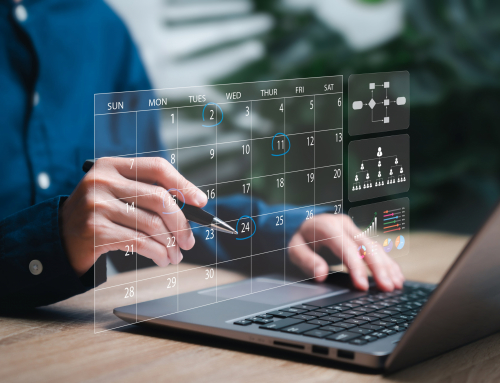Maximizing Customer Lifetime Value with Call Center Services
Every company wants to maximize customer lifetime value—but with so many variables that affect it, it’s hard to know where to begin.
As a result, most companies start with the product or the customer.
However, there’s a hidden value center that likely already exists within your company that can improve CLV in a variety of ways—the call center. If you’re looking to improve customer lifetime value, there are five key ways your call center services—when used effectively—can maximize it.
The Power of Personalized Customer Service
Personalized customer service is often seen as an “added bonus,” rather than a necessity. Although this isn’t quite true—71% of customers now expect personalized experiences with brands—it does allow call centers who use personalization to gain an edge over those who do not.
Personalization also plays a significant role in maximizing CLV. Consider some of the recent research about personalization and customer loyalty and CLV:
- 49% of customers say that they’re “likely to become repeat buyers” if a brand offers them a personalized experience.
- 62% of customers say brands will “lose their loyalty” if they deliver generic, or un-personalized, experiences (this is up from just 45% in 2021).
- Business leaders say that customers spend 34% more on average when their experience is personalized.
All of this data points to the importance of personalization for CLV—for loyalty, for higher purchase values and more repeat purchases.
Personalization doesn’t just mean creating tailored experiences for your customers—although that’s a big part of it. Personalization also means building relationships with your customers—knowing their preferences, needs, interactions, history and more. A good CRM can help you manage and collate this data, so any agent who interacts with them has the full picture of their history with your brand.
Cultivating relationships with your customers allows you to develop loyal customers who feel connected to, and cared for by, your brand. And of course, the more loyal your customers become, the greater their lifetime value.
How Call Centers Support Customer Retention
Personalization aids in customer loyalty, which supports customer retention. Obviously, the more loyal customers are, the higher retention rates they are likely to have. And with higher retention rates comes more purchases, a longer “lifetime” and a higher customer lifetime value.
But there are more ways your call centers can support customer retention aside from personalization—service levels and quality matters too! With better service, you can offer improved customer experiences and more problems resolved—which reduces churn and improves retention (and therefore, CLV). Call centers can support retention through:
Improving service metrics. Key service metrics and quality standards can be improved to offer faster and higher-quality service, for example:
- FCR rates
- Time in Queue
- AHT
- Average Hold Time
and so on. By offering improved service, customers want to purchase more from your company—in fact, a whopping 93% of customers have said that they are more likely to become repeat customers when a company has excellent customer service.
Communicate proactively with customers. If you always wait for the customer to have a problem before they contact you, you’re missing out on a big opportunity to support customer retention and improve brand loyalty! Outbound customer service or success teams can ensure customers are getting the most value out of your products, provide cross-selling or upselling and gather customer feedback.
Give customers quick resolutions. Speed is of the essence. Customers expect quick responses and quick resolutions. The faster you can resolve their issue, the more likely customers are to feel satisfied with the response. This is true both in terms of service—high FCR rates and Speed of Answer rates—and in resolution—receiving refunds quickly, being able to change their service right away, and so on.
Solicit and respond to customer feedback. When customers know their voices and opinions matter, they’re not only more likely to provide feedback—they’re also more likely to stick around and purchase more frequently from your brand. So ask for customer feedback regularly, though surveys, CSAT and NPS polls, and other means. And when customers leave feedback for you through online reviews or other channels, take the time to read their feedback, respond (publicly or privately) and take action, when applicable.
Leveraging Call Center Data for Insights
Call centers often collect and have access to lots of customer data—and this data can yield valuable insights to help your team improve CLV.
Increasing CLV through data starts with understanding your customers and their needs, preferences and behaviors. Look for data around three key areas:
Customer churn. Call center CRMs and other data sources will be able to pinpoint when customers churned—as well as any actions, behaviors or issues that led up to it (or lack of behaviors, as the case may be). In a well-known example, Facebook discovered early on that new users who “friended” at least 7 people in the first ten days after signing up for their accounts were more likely to continue using the platform. As a result, they were able to orient their onboarding flows, welcome emails, initial notifications and more around ensuring that all new users hit that “7 friend” mark within the first ten days, skyrocketing their growth and reducing churn.
Trouble touchpoints. Call centers may also have data on problematic touchpoints with the sales, onboarding or adoption processes. Analyzing and addressing these touchpoints can give you insights to help you reduce customer churn, deliver better experiences and understand customer preferences.
MVCs (Most Valuable Customers). Your call center CRM data likely has lots of untapped insights around your most valuable customers. What do they want? What behaviors and demographics are common between them? What preferences do they have? By considering and catering to your MVCs, you can more easily find similar members in your wider audience and convert them into valuable customers as well.
Why Call Center Training Matters for Customer Lifetime Value
An oft-overlooked part of maximizing customer lifetime value is maximizing the value of your employees. By investing in employee training, you create more valuable employees that are then able to deliver that value to your customers—thereby improving customer satisfaction, and by extension, CLV.
Ready to take your business to the next level? Let our call center experts show you how we've helped organizations just like yours seamlessly scale while lowering costs and increasing efficiencies.
You won't regret it.
Think of it this way:
- Without effective training, agents are unlikely to be able to communicate well or provide great service to your customers.
- Without great service, customer satisfaction and loyalty declines, and customers are unlikely to return.
- Without returning customers, your CLV value goes down, and your CAC goes up.
Investing in your agents through effective and ongoing training is an investment that pays dividends. And in case you’re wondering if customers really care that much about customer service, take a look at some of the data:
- 54% of customers make purchasing decisions based on customer service.
- 57% of customers say customer service is one of the primary factors determining brand loyalty.
- 92% of customers will switch to a competitor brand after 3 or less negative customer service experiences.
- 80% of customers cited “speed, convenience, knowledgeable help and friendly service” as the most important elements of a customer service experience.
So don’t neglect the agents who are delivering your service! With better training, agents can deliver higher-quality experiences that influence purchasing decisions, loyalty and retention.
How Call Center Technology Enhances Customer Lifetime Value
The right call center technology can also make or break your CLV improvement efforts. Companies that deliver omnichannel experiences, for example, give customers a more streamlined experience that’s easier to navigate, which greatly improves CSAT and CLV.
For the record, customers today expect omnichannel support—but 78% feel it rarely, if ever, happens. As a result, this is a key area to differentiate your brand and customer experience. For many brands, outsourcing is the easiest and most effective way to scale up to providing omnichannel support, as an outsourcing team will already have the software, technology, resources and processes to effectively implement and manage an omnichannel strategy.
But omnichannel support isn’t the only way call center technology can enhance customer lifetime value. By integrating key areas of your tech—say, customer data and your call routing system, or your CRM with your outbound marketing tools—you can deliver more streamlined experiences across the board to provide more value for customers.
Implementing Your Customer Lifetime Value Maximization Strategy
Of course, knowing what to do is one thing—figuring out how to implement it is another.
A key first step is to assess your current call center operations. What’s working right now, or what isn’t? What’s currently contributing to customer loyalty, and where are customers regularly getting frustrated or churning? By analyzing your existing operations, experiences and processes, you’re better suited to create effective change that will drive results.
Once you’ve done so, though, developing and implementing your CLV improvement strategy requires the bandwidth of many departments, from customer service to marketing, product and quality and more. Prioritize and optimize the areas that are most important for your customers and current business needs—that is, determine if it’s more important to focus on improving loyalty or quality, if you need to address glaring problems or improve your customer communications. Then find ways to bring every team on board, addressing the underlying issues across the board.
Outsourcing your call center can be a more efficient way of improving CLV, as it allows you to focus on more at once, without needing increased internal resources. Instead, your outsourced team can provide you with the key elements of your call center that can improve CLV:
- personalized customer service
- effective and ongoing training and development
- improved service levels and quality
- data collection and analysis
- cross-selling and upselling services
- customer loyalty programs
- and more!
You may know what needs to happen—an outsourced call center partner can help you implement it and drive the results.
Measuring Success: CLV Metrics and KPIs
Once your plan is underway, it’s essential to regularly track and monitor key metrics and KPIs to ensure things are moving in the right direction. We recommend the following key metrics to measure for CLV:
- Customer Retention Rate: measures the percentage of customers that continue to subscribe / purchase from your brand over a certain period of time
- Customer Churn Rate: the inverse of CRR—measures the percentage of customers that churn / leave your brand over a certain period of time
- Customer Acquisition Cost (CAC): as the name suggests, the average cost of acquiring a customer. This is necessary to determine CLV, so you need to have a clear and accurate measure of this to track CLV over time.
- Repeat Purchase Rate: measures the rate at which customers return to make repeat purchases. Can also be used to measure how frequently customers return.
- Purchase Frequency and Value: measures how often customers (or customer segments) purchase from your brand, and the average value of those purchases.
But does it really work?
Some clients are skeptical that their call center can really improve their CLV. But at ROI CX Solutions, we’ve been offering call center solutions for decades, and have seen first-hand the way that small improvements over time can skyrocket CLV.
Take for example, one of our E-Commerce clients. When we came on, their company was experiencing high resonance from ads and a strong product market fit—both great results—but the resulting call volume from interested customers was overwhelming their call center.
As a result, existing customers were growing frustrated that they couldn’t receive timely help when they needed it, and potential customers were frustrated as well, getting a poor experience of the brand right off the bat.
Our team added more agents to meet the growing call volume, as well as new reporting metrics and data-driven technological solutions that resulted in:
- decreased customer churn
- improved customer service
- an unprecedented 70% inbound sales conversion rate
Not only did improved service skyrocket inbound sales, it delivered higher-quality experiences that reduced churn, CACs, and improved CLV.
The Bottom Line: The Call Center as a Tool for CLV Maximization
If you’re looking to improve your customer lifetime value, your call center is a valuable hidden gem, and a great place to start. Call centers can maximize CLV through providing:
- best-in-class customer service
- customer insights via data
- high-quality technology to deliver seamless experiences
- personalized customer experiences
- improved customer retention
- and more!
While all of these strategies and tactics may feel like a lot to focus on, outsourcing can help you ramp up your call center services and improve CLV quickly and effectively.
At ROI CX Solutions, we can provide outsourced services from full-scale contact centers to overflow support, customer loyalty programs or data analytics—whatever you need to support your customers and improve lifetime value.
Curious how we can help with your CLV maximization strategy? Connect with an expert from ROI CX Solutions today and we’ll show you how.






